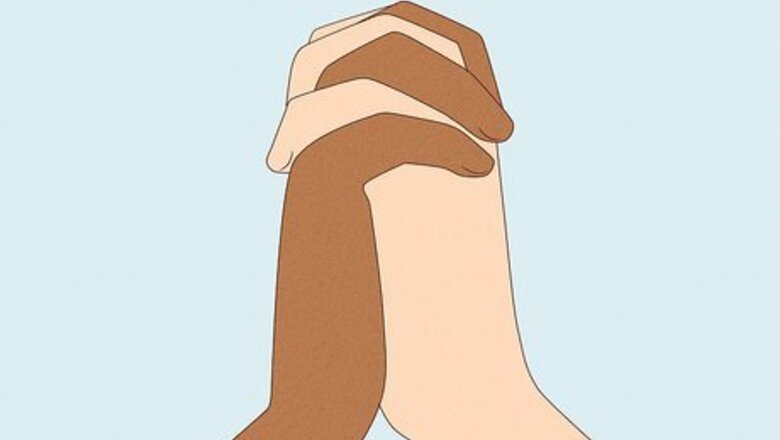
views
- The love knot symbolizes an unbreakable bond between 2 people, most often romantic partners.
- The love knot may have been given as a gift between ancient Celtic couples around 400 A.D. as a symbol of their partnership.
- Other classic Celtic knots like the trinity knot, the spiral knot, and the Dara knot also might represent love, loyalty, and bonds among friends and family.
Celtic Love Knot Meaning and History
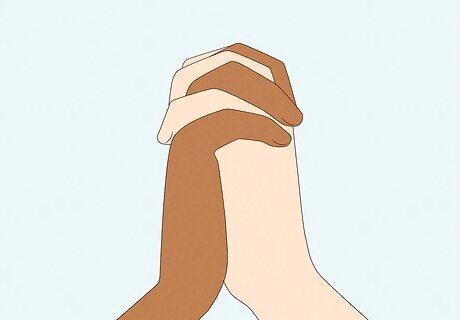
The love knot symbolizes an unconditional bond between 2 people. More specifically, the knot’s intertwined hearts represent the deep connection between partners, and the endless loops and threads call to mind the everlasting love they have for each other. Many couples gift each other celtic knot jewelry like rings or necklaces that feature this knot to remind each other of their intimate and irreplaceable relationship. The interlocking hearts of the love knot also form a continuous loop, much like an infinity symbol, which represents perpetual or infinite love.
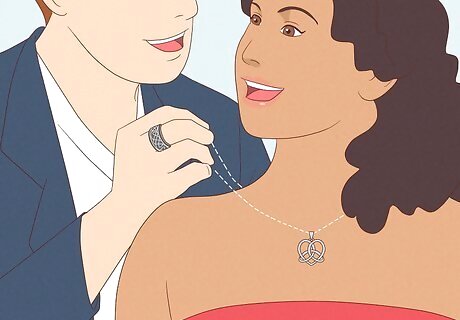
Celtic couples may have traded these knots to solidify their bonds. Just like modern couples do, it’s possible that Celts would tie and offer these knots to their lovers as expressions of their deep affection. Of course, much of Celtic history is lost to murky translations and scant texts, so it’s hard to say for sure. Still, that doesn’t diminish the powerful contemporary meaning. As far as Celtic knots go, the love knot is fairly undocumented, and may be a more recent adaptation of other knots. Even if the love knot is modern, we do know that lovers traded similar knots as tokens of their affection, which means that you’re still following in ancient, timeless footsteps.
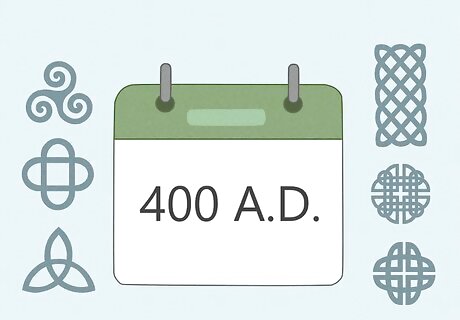
Celtic knots may have originated around 400 A.D. At least, that’s where the Christian tradition marks their origin, when Christianity was spreading throughout Europe and Celtic knots were incorporated into Christian imagery. They probably go even further back, but before then, they were probably passed through oral, rather than written, history, which makes them hard to track. Nevertheless, when you give a Celtic knot to your loved one, it’s amazing to think that you might be participating in a tradition that’s survived so many centuries. The knots were most likely used in religious and spiritual imagery, but their meanings warped and adapted as they were spread across cultures. Today, we get much of our info from the ancient Book of Kells, produced around the year 800, which is a religious text that features many elaborate illustrations, including many knot designs.
Tying a Love Knot
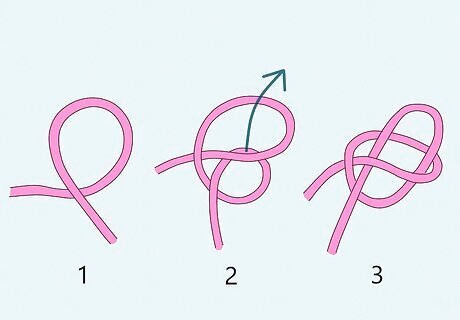
Make a loop in a length of rope, then feed another loop up through it. To start making your love knot, form a loop in your rope, with the right end of the rope over the left. Then, take the right end and wrap it around into another loop, bringing this second loop up and through the first loop to form a pretzel shape.
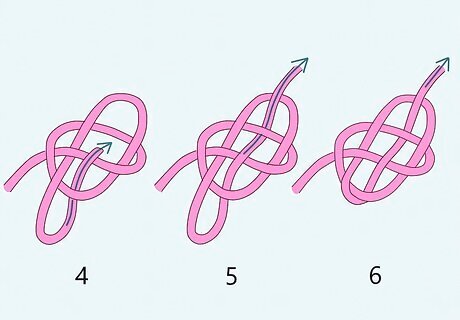
Weave the right end of the rope through the loops. Take the right end and bring it under the bottom-most curve in the loops, then over the second curve. Feed it under then over the next 2 curves and pull it gently so that it’s fairly taut.
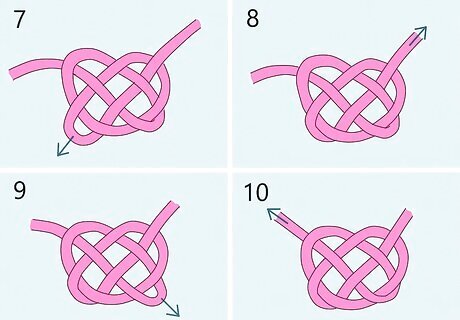
Tug on the bottom curves of the knot to tighten it. On the bottom of your knot are 2 curves of your intricate pretzel. Tug on the parts of the curves that feed back up into the knot (opposite the actual ends of the rope), then tug on the actual ends in order to tighten the knot. Tug on the bottom left curve, then the right, alternating until the knot appears to your liking. Gift your new knot to your partner as a sign of your undying affection! Or, use it to finish wrapping a gift as a thoughtful flourish.
Other Celtic Knots
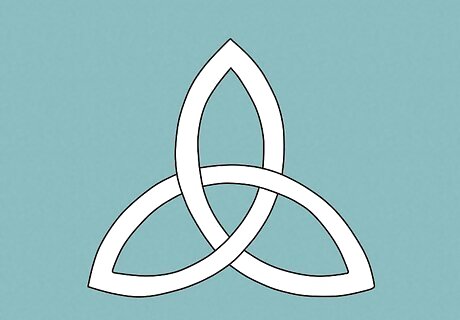
The Trinity Knot Also known as the “triquetra,” this knot features 1 continuous strand that forms 3 points on the outside and which overlap in the center. In Christian contexts, it’s often used to represent the trinity, hence the name. Before Christianity, however, it’s thought to have represented the female archetypes of the maiden, the mother, and the crone. This is perhaps the most common Celtic knot, often being featured in many Celtic or Irish-themed locations, merchandise, or events. In modern depictions, the trinity knot sometimes features an additional heart shape, blending the divine with earthly love.
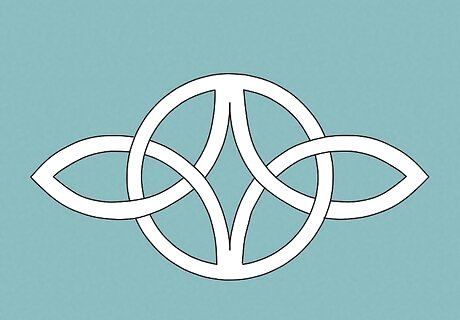
The Serch Bythol Translated from Welsh as “endless love,” this is a design that includes 2 trinity knots side by side, forming a circle at their center. While not much is known about this design (and therefore it’s probably a modern invention), many associate it with everlasting love.
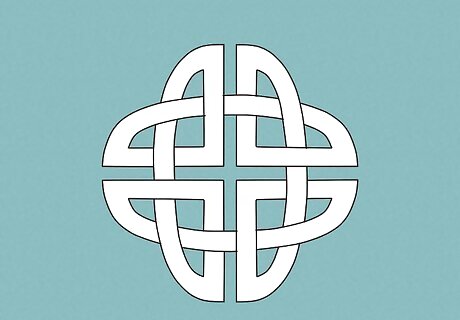
The Celtic Shield Knot The shield knot features 1 continuous strand that forms 4 distinct quadrants that resemble a round cross shape. It’s said that the shield knot adorned ancient warriors’ shields as a charm against harm. It’s also speculated that it warded evil spirits away from sick people. This knot might represent unity, family loyalty, or love among friends.
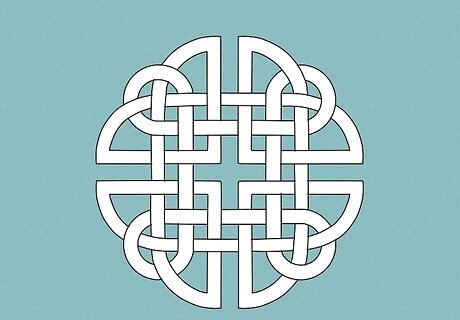
The Dara Knot This design features a complex network of strands that form a large circular shape. The term “dara” comes from the word “doire,” which is Irish for “oak tree,” suggesting that the design itself represents the roots of a tree. In turn these roots might represent strength and fortitude. The dara knot is often associated with family ties or family roots. It might also represent home or the place to which you’re rooted.
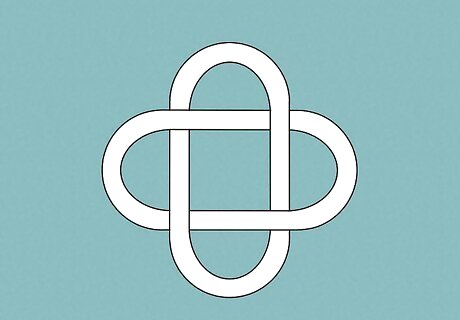
Solomon’s Knot A knot formed of 2 strands in a cross shape that overlap in the center, this design is said to represent the bridge or bond between the divine and the human. Many claim it’s one of the oldest knot designs. It was often found on ancient temples or places of worship, and as a result came to be associated with the ancient King Solomon, a Biblical figure. Like many other knots, this knot’s continuous and intertwined threads are said to represent infinity or immortality.
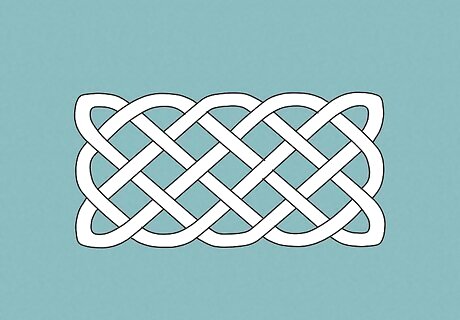
The Sailor’s Knot This knot actually consists of 2 intertwined knots, and is fairly complex compared to the others. In the center, it forms parallel, inlaid squares. The outsides feature looped “points” of a cross. It’s said that sailors tied these knots while on long voyages to remind themselves of their loyalty and friendships with their crewmates and those they left on land. Others say the sailors would give the knots to their loved ones on land before they departed to remind them of their bond during their absence.
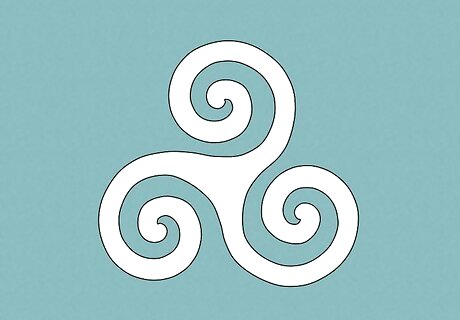
The Triple Spiral Also known as the “triskele” and unique among the knots, this design features distinct endpoints. It appears as 3 spirals that are joined at the center, with each spiral ending at their own respective centers. The design was found on a notable ancient tomb and other monuments, and may have represented pre-Christian beliefs.















Comments
0 comment